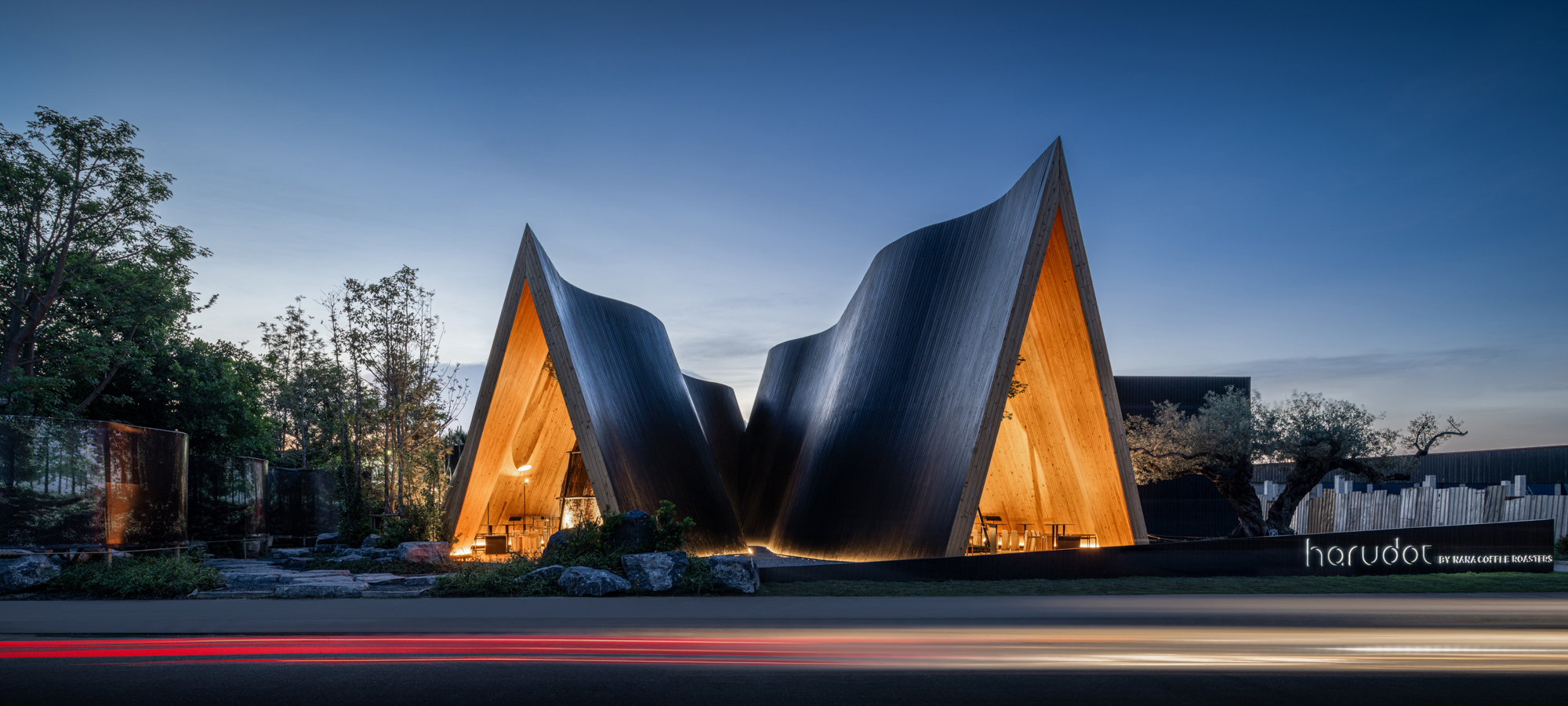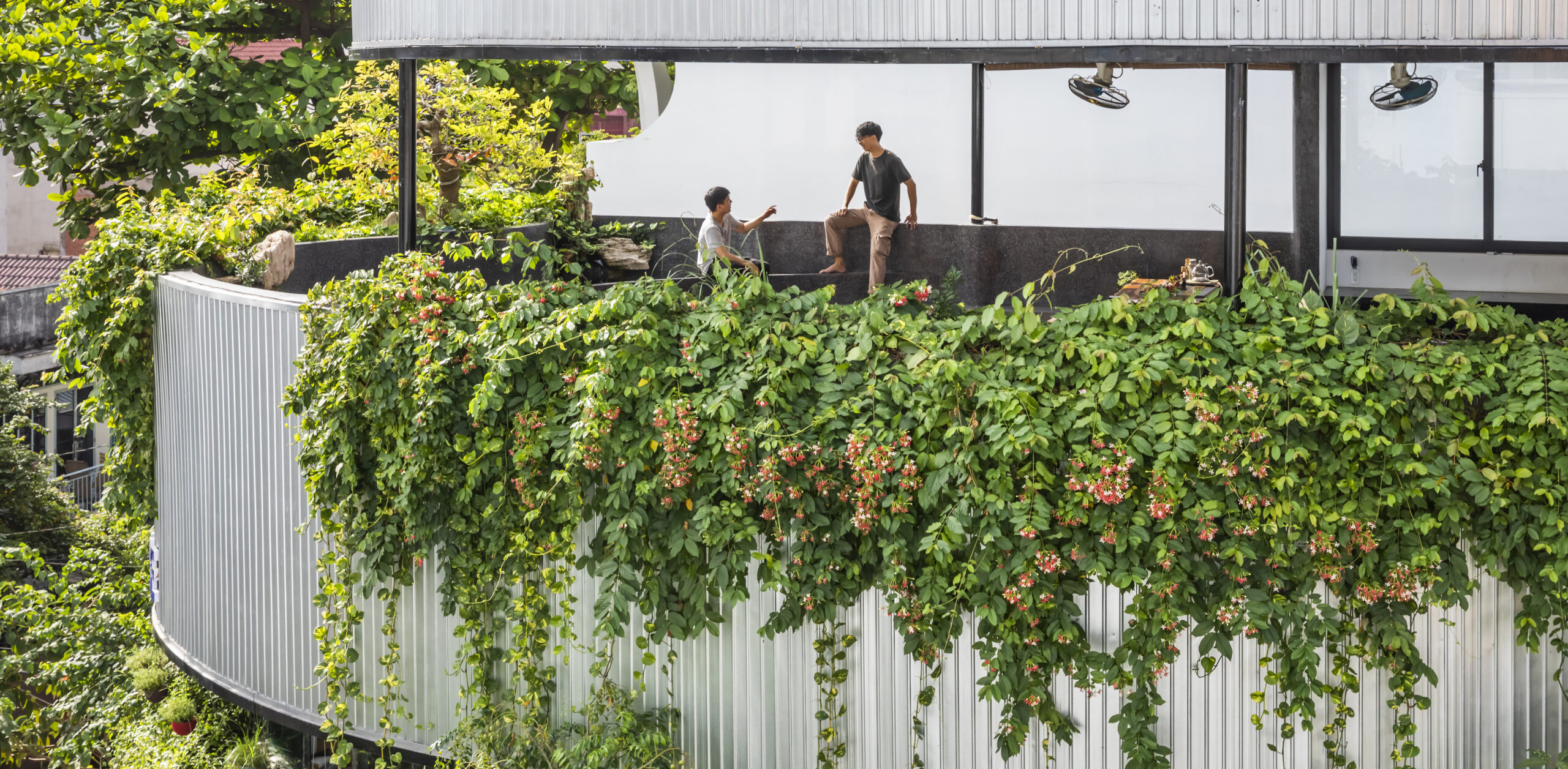Architects: Want to have your project featured? Showcase your work by uploading projects to Architizer and sign up for our inspirational newsletters.
The design of culinary spaces is an art that blends the sensory with the spatial. This year’s most inspiring restaurant designs push the boundaries of how these two worlds intersect, creating environments that are as much a part of the dining experience as the cuisine itself. Celebrated in the Architizer A+ Awards, the winning entries and special mentions span a range of scales and concepts, reflecting a global perspective with designs from vibrant urban eateries in New York to serene dining spaces in Japan.
The connection between architecture and culinary spaces is profound, as the design of a restaurant is as crucial to the dining experience as the food itself. Architects and designers craft environments that not only complement the culinary offerings but also elevate the senses, creating atmospheres that are integral to the storytelling of each dish. Whether through innovative use of materials, lighting or spatial configurations, these projects exemplify how architecture can transform a meal into a memorable experience. Each of the following restaurants offers insight into how design can shape and enhance the culinary landscape. Together, they represent the cutting edge of restaurant design today.
Stand Up Udon Noodel
By sawa architects, Jingumae, Shibuya City, Japan
Jury Winner, Restaurants (S <1000 sq ft), 12th Annual A+Awards
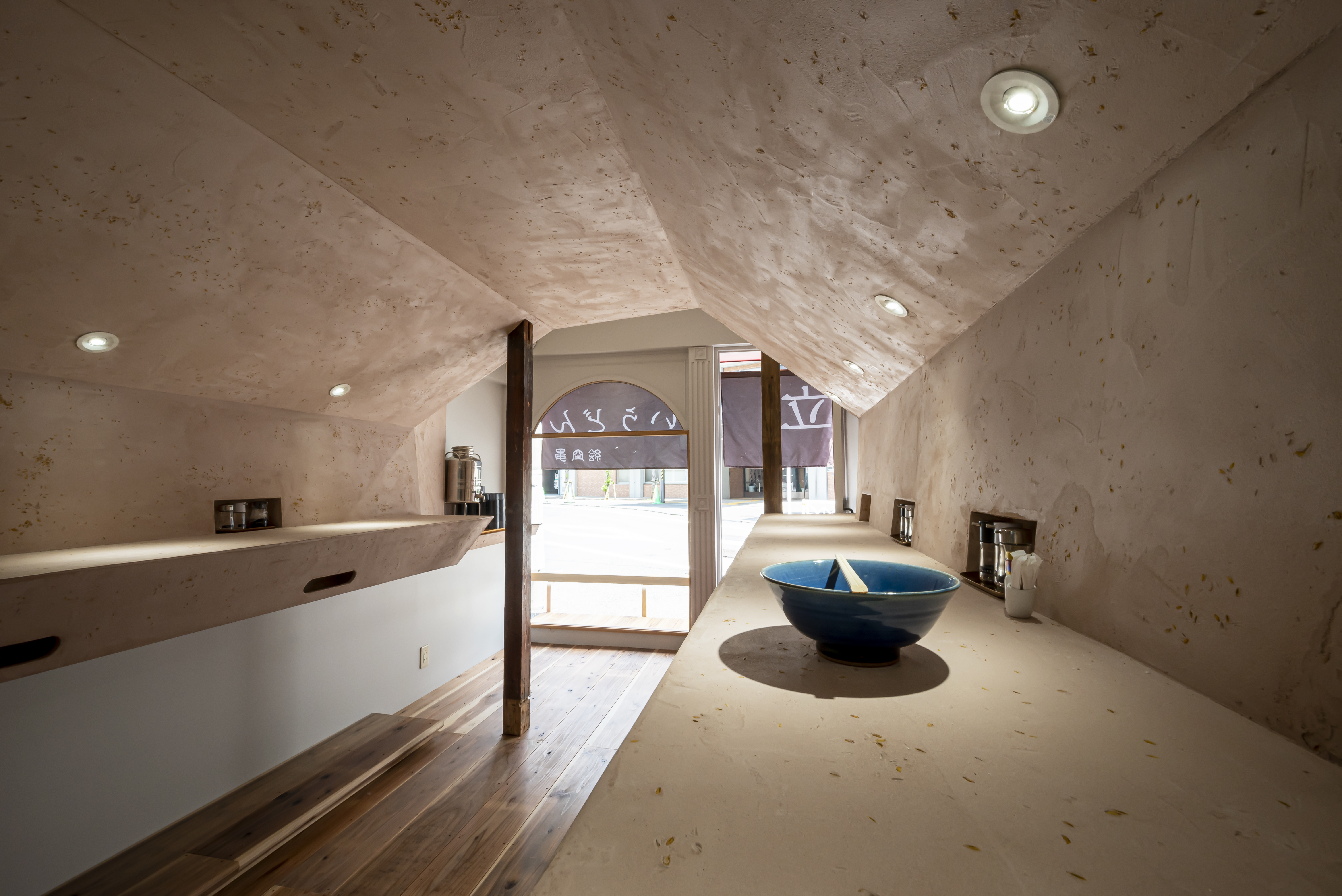

Located in Harajuku, Tokyo’s trendy district, this small udon noodle restaurant features a standing-only style. Despite many closures due to COVID-19, the restaurant preserved its distinctive red exterior, which locals cherish as a city icon. The design respects the unique culture of stand-up dining by creating a single arched counter that embodies three key atmospheres: an indescribable feeling, psychological distance from neighbors, and the heat from the kitchen.
The counter, plastered with rice hulls, serves multiple functions including lighting, seasoning and tissue storage. Existing wooden pillars are retained to highlight the traditional Japanese architectural scale, blending unique shapes with cultural elements.
Slabtitude
By Vaslab Architecture, Bangkok, Thailand
Popular Choice Winner, Restaurants (S <1000 sq ft), 12th Annual A+Awards
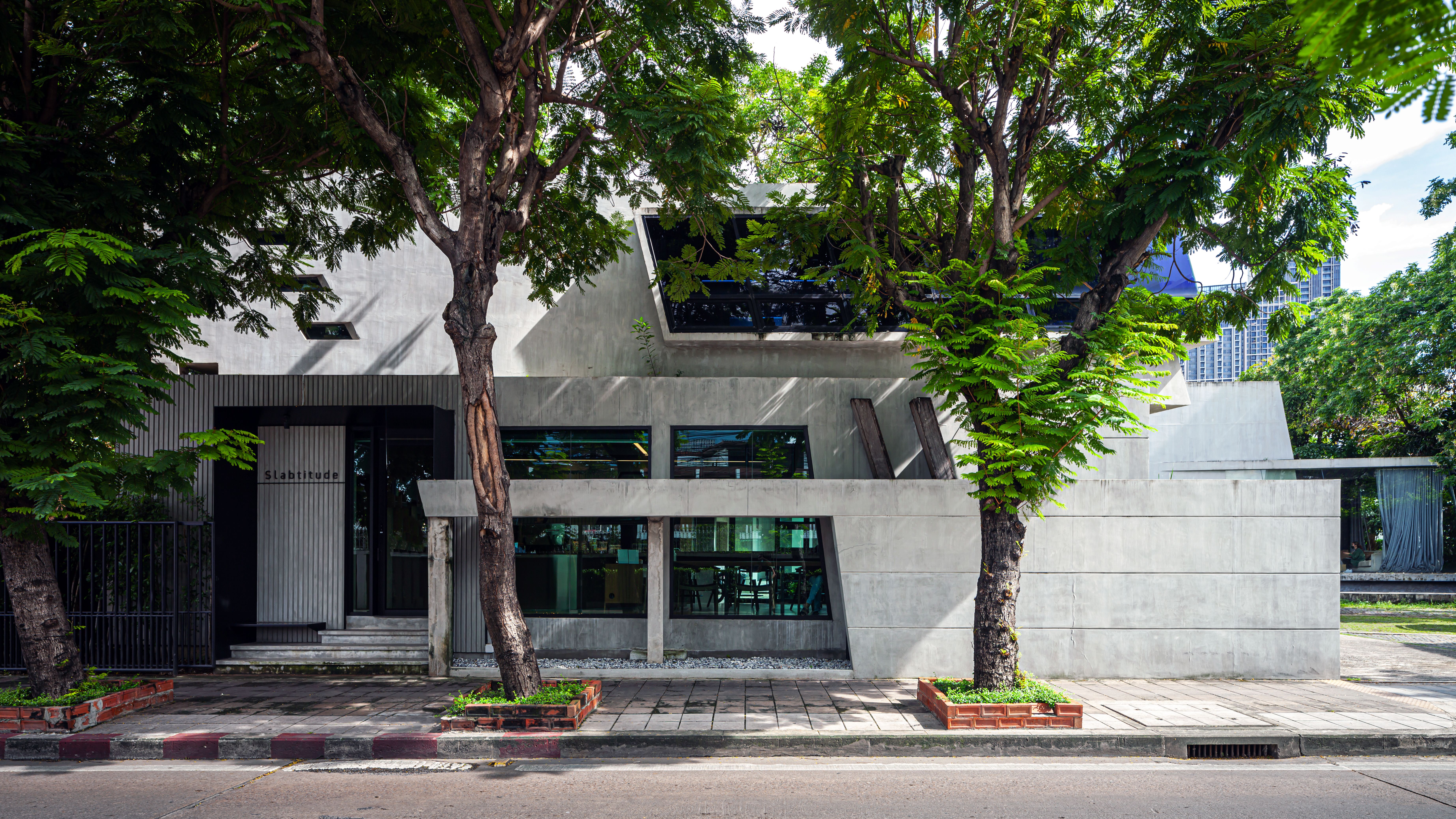
 Slabtitude, a cafe created by Vaslab, emerged from the firm’s idea of revamping the storage space in front of their office into a place where staff could casually meet, work or relax over coffee. The cafe’s design features exposed concrete surfaces and a striking, 23-foot-long (7-meter) Balau wood table, crafted in collaboration with Thick and Thin Studio.
Slabtitude, a cafe created by Vaslab, emerged from the firm’s idea of revamping the storage space in front of their office into a place where staff could casually meet, work or relax over coffee. The cafe’s design features exposed concrete surfaces and a striking, 23-foot-long (7-meter) Balau wood table, crafted in collaboration with Thick and Thin Studio.
This cantilevered table, inspired by Italian coffee culture, serves as the cafe’s centerpiece, blending functionality with the natural beauty of the wood. The space also incorporates random arrangements of fiber cement panels, seamlessly integrating with the concrete surfaces, while the overall design reflects Vaslab’s aesthetic through curated music, art, and coffee selections.
Harudot By Nana Coffee Roasters
By IDIN Architects, Tambon Samet, Thailand
Jury + Popular Choice Winner, Restaurants (L >1000 sq ft), 12th Annual A+Awards
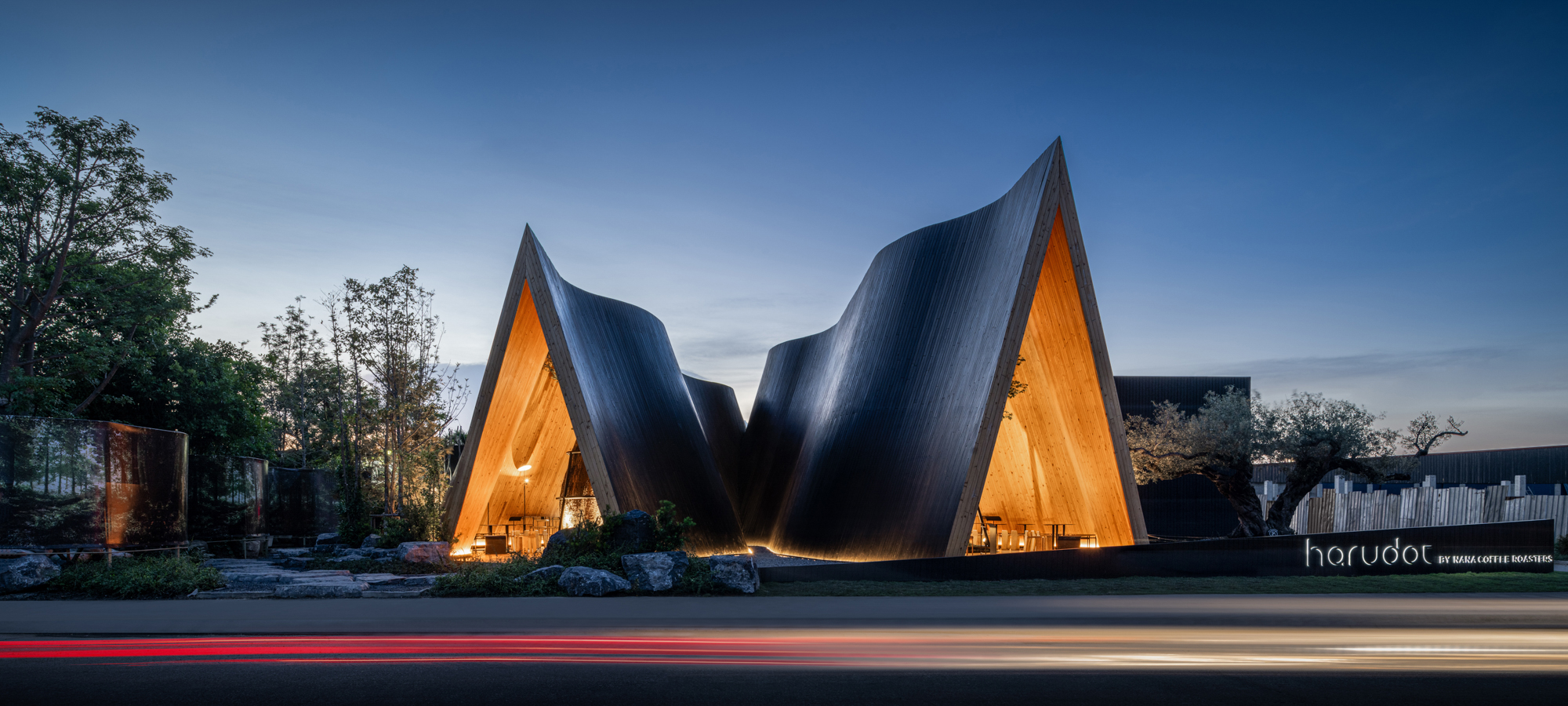
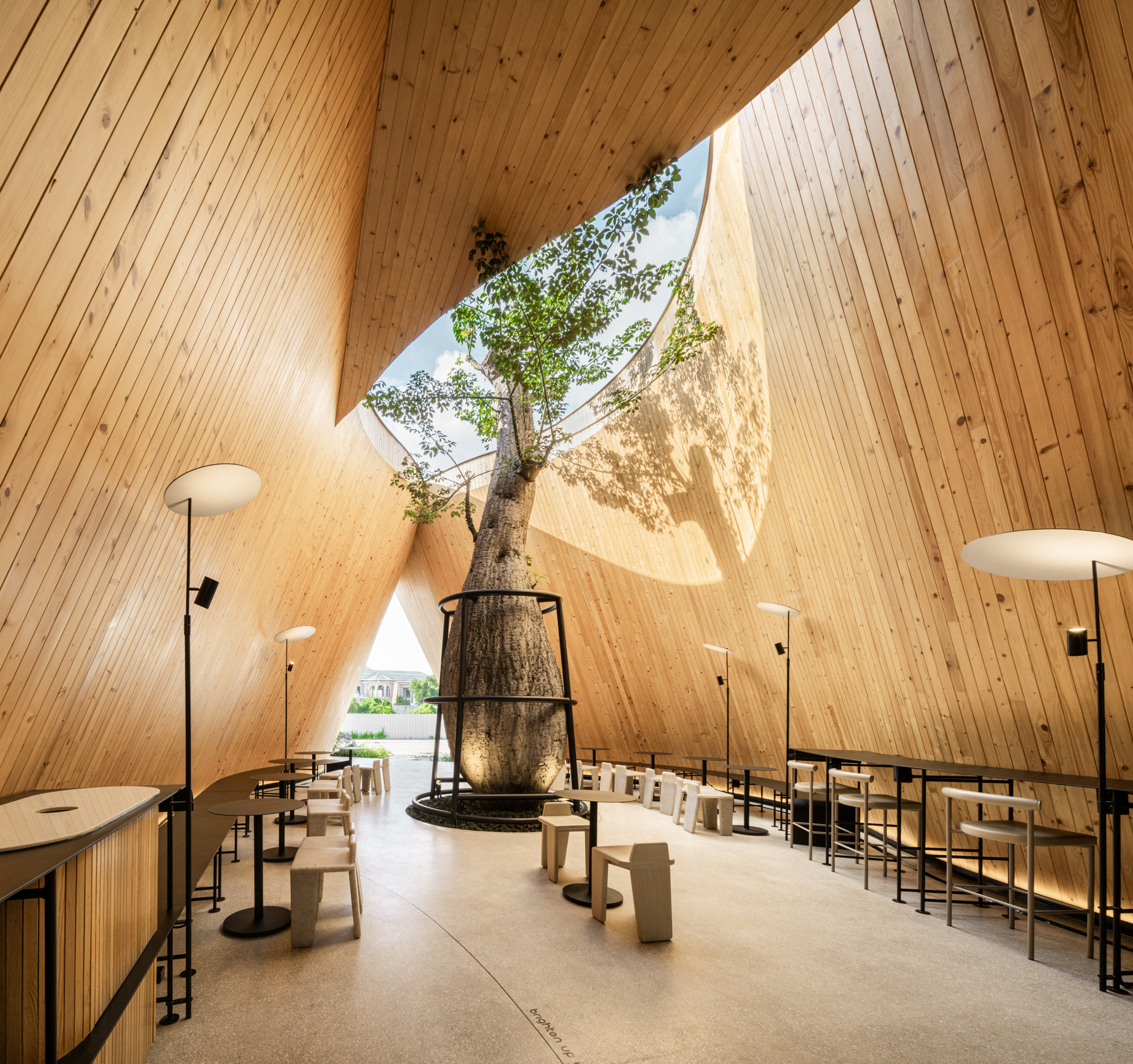
 Harudot is a unique café in Chonburi, Thailand, resulting from a collaboration between Nana Coffee Roasters and a plant-loving landlord. The café, named “Haru” (Spring) and “Dot” (Starting Point), is designed to be a destination that blends new beginnings with growth, featuring a central baobab tree in an inner courtyard where the architecture opens to the sky. Inspired by Japanese culture’s simplicity, the exterior boasts three black gable forms contrasting with warm pine wood interiors.
Harudot is a unique café in Chonburi, Thailand, resulting from a collaboration between Nana Coffee Roasters and a plant-loving landlord. The café, named “Haru” (Spring) and “Dot” (Starting Point), is designed to be a destination that blends new beginnings with growth, featuring a central baobab tree in an inner courtyard where the architecture opens to the sky. Inspired by Japanese culture’s simplicity, the exterior boasts three black gable forms contrasting with warm pine wood interiors.
The space is divided into functional zones, with curved, dynamic forms and semi-outdoor areas created by voids that let in natural light and rain. The interior integrates these voids with Barrisol stretch ceilings, creating a cohesive and warmly lit environment. Seating is designed as a continuous ribbon, and outdoor furniture incorporates coffee grounds, rice, and leaves. Details extend to custom fonts, terrazzo floors with circular patterns and embedded quotes, and playful flower petal designs, enhancing the cafe’s connection with nature and its thematic elements.
Mátria Parques das Flores – Restaurante Baffi
By Alencar Arquitetura, Brazil
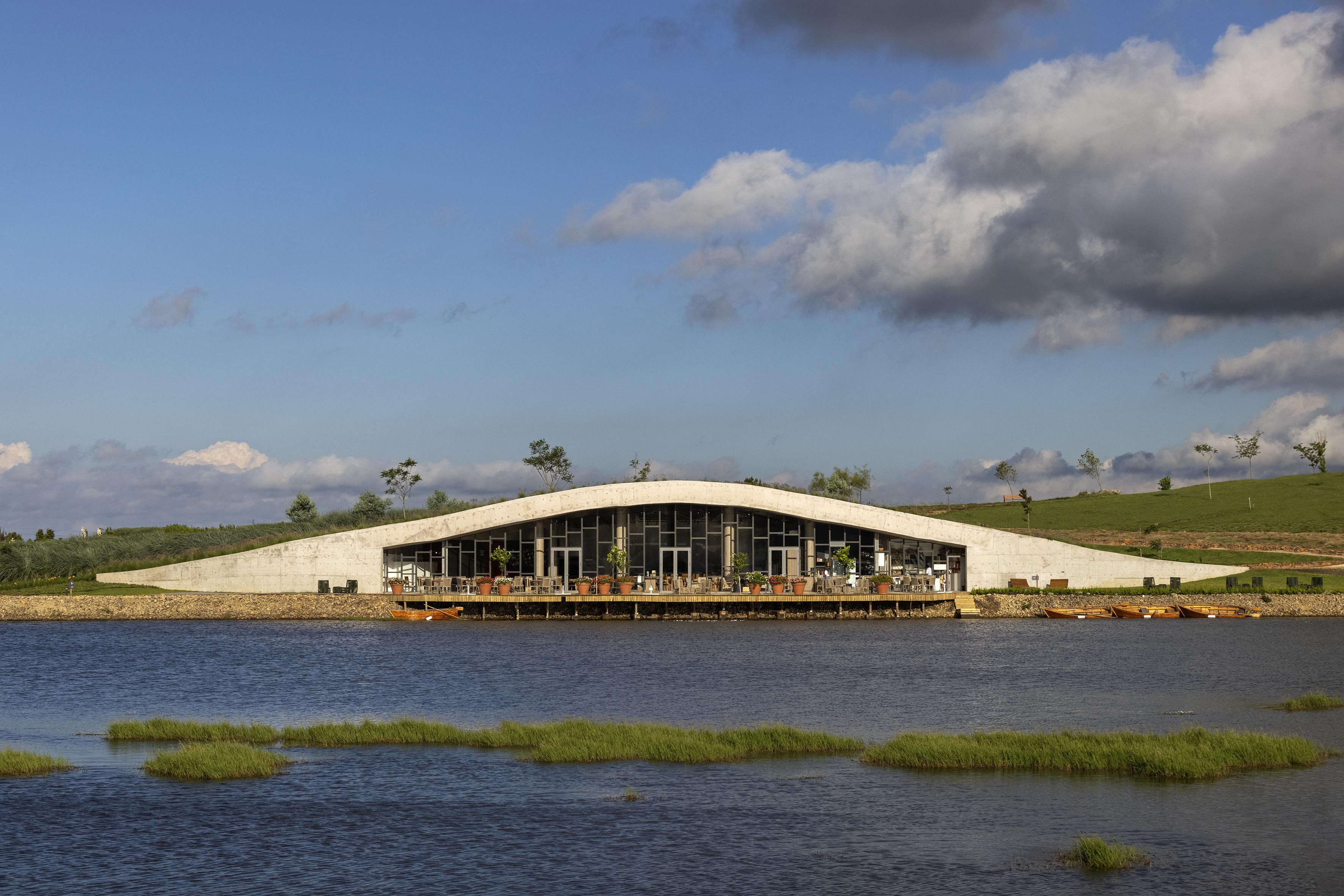
 Set in the picturesque landscape of Rio Grande do Sul, the Restaurant by the Lake is designed to offer visitors a memorable dining experience with stunning views. The challenge was to create architecture that enhances, rather than competes with, the natural beauty of the environment. The restaurant’s cave-like design, with its concave-convex structure, seamlessly blends into the gentle elevations and slopes of the terrain. In turn, it harmoniously integrates with the landscape to create a discreet and immersive experience.
Set in the picturesque landscape of Rio Grande do Sul, the Restaurant by the Lake is designed to offer visitors a memorable dining experience with stunning views. The challenge was to create architecture that enhances, rather than competes with, the natural beauty of the environment. The restaurant’s cave-like design, with its concave-convex structure, seamlessly blends into the gentle elevations and slopes of the terrain. In turn, it harmoniously integrates with the landscape to create a discreet and immersive experience.
Khao Niao Restaurant + Onda Cafe
By ASWA (Architectural Studio of Work – Aholic), Bangkok, Thailand
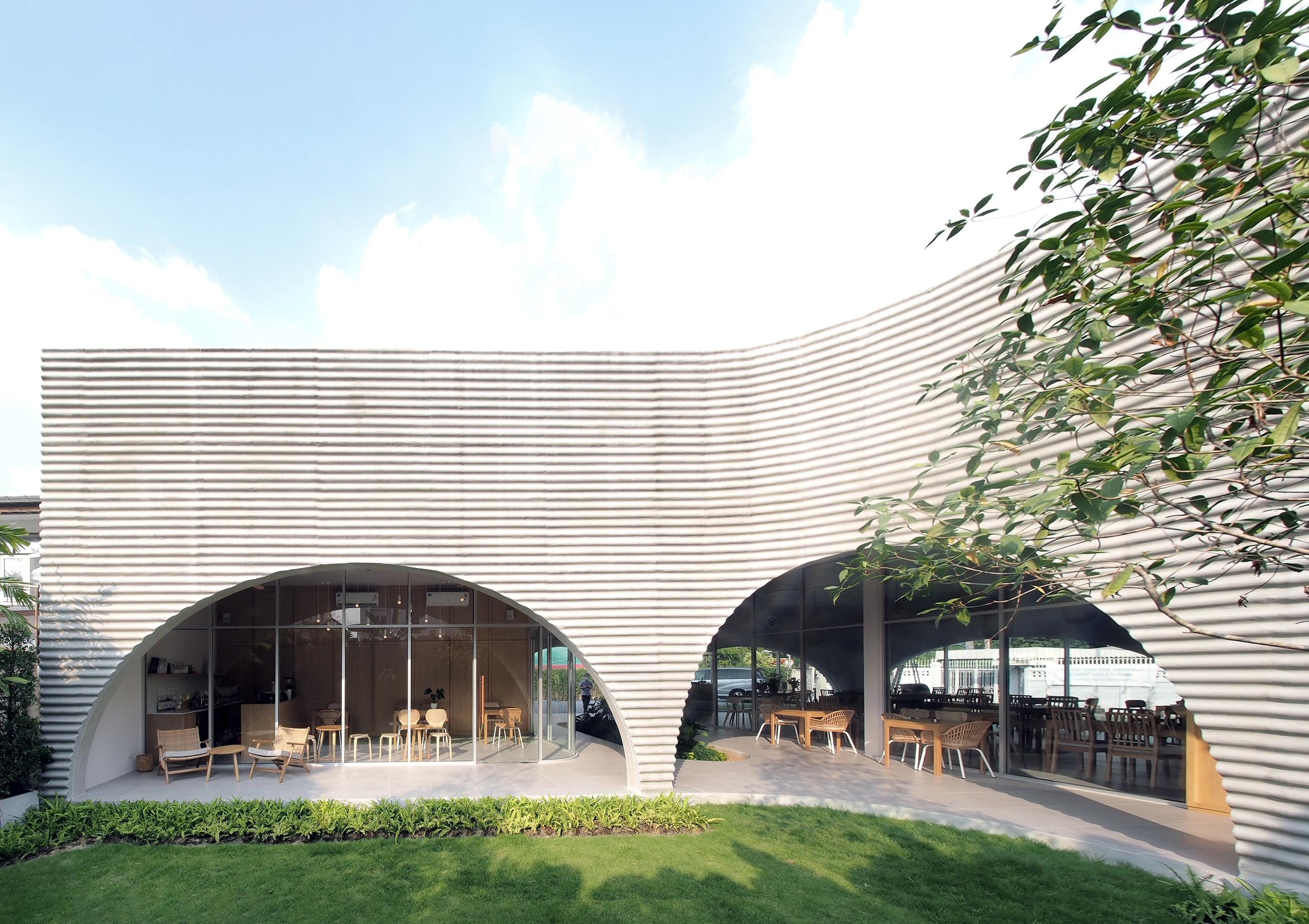
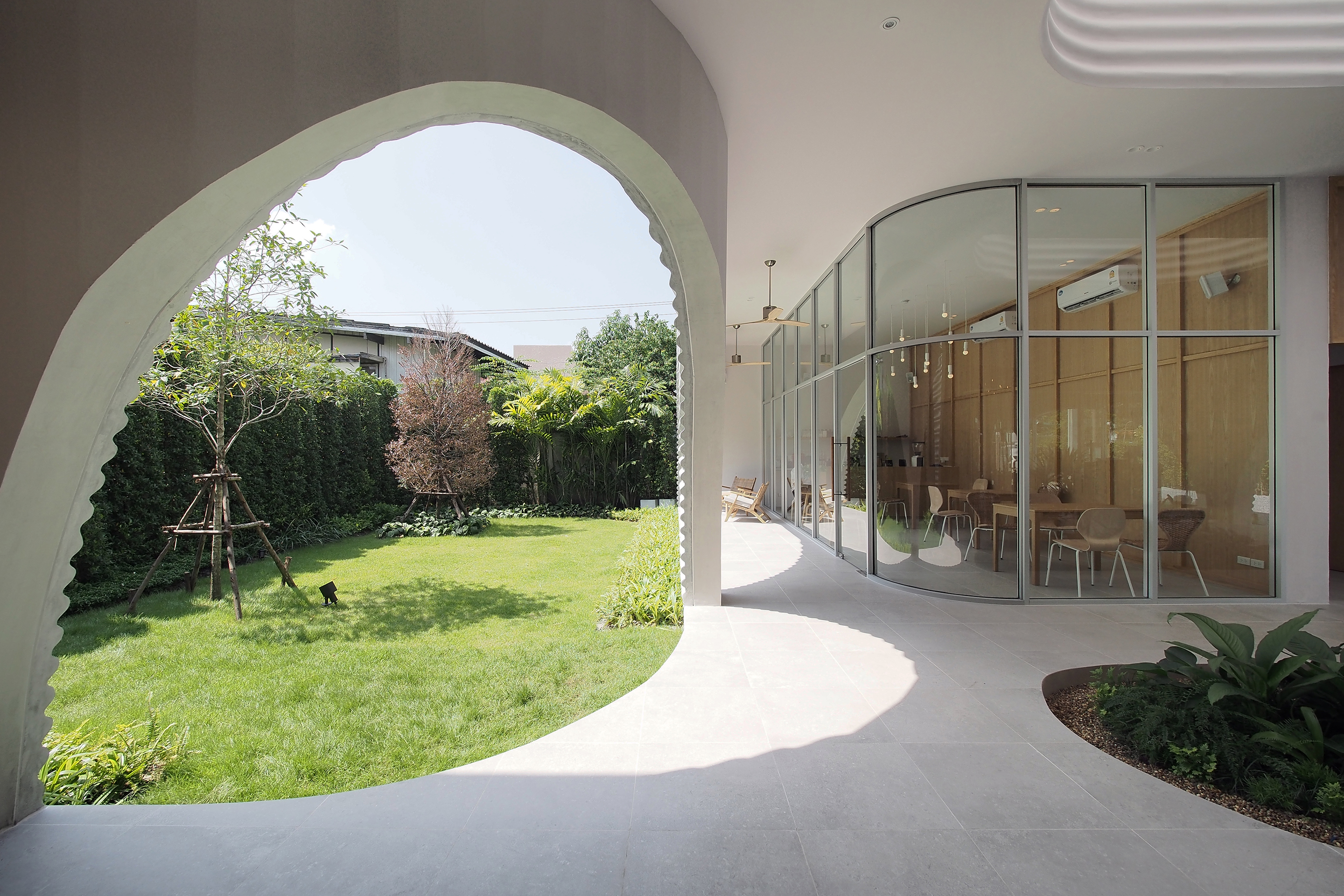 ASWA designed the new Khao Niao + Onda cafe in Bangkok’s Ari neighborhood, surrounded by residential buildings and other eateries. The one-story, L-shaped restaurant features a wavy precast concrete facade, crafted using a unique onsite mold created from corrugated roof tiles.
ASWA designed the new Khao Niao + Onda cafe in Bangkok’s Ari neighborhood, surrounded by residential buildings and other eateries. The one-story, L-shaped restaurant features a wavy precast concrete facade, crafted using a unique onsite mold created from corrugated roof tiles.
The building is divided into two main areas: the restaurant with the kitchen and the cafe with service areas, both centered around a semi-indoor courtyard that offers a peaceful retreat and can host small events. The façade’s wave-like design, inspired by the meaning of “Onda” (wave in Italian), includes half-circle openings that reveal the warm wooden interior and allow natural light to fill the space.
Tatiana
By Modellus Novus, New York City, New York
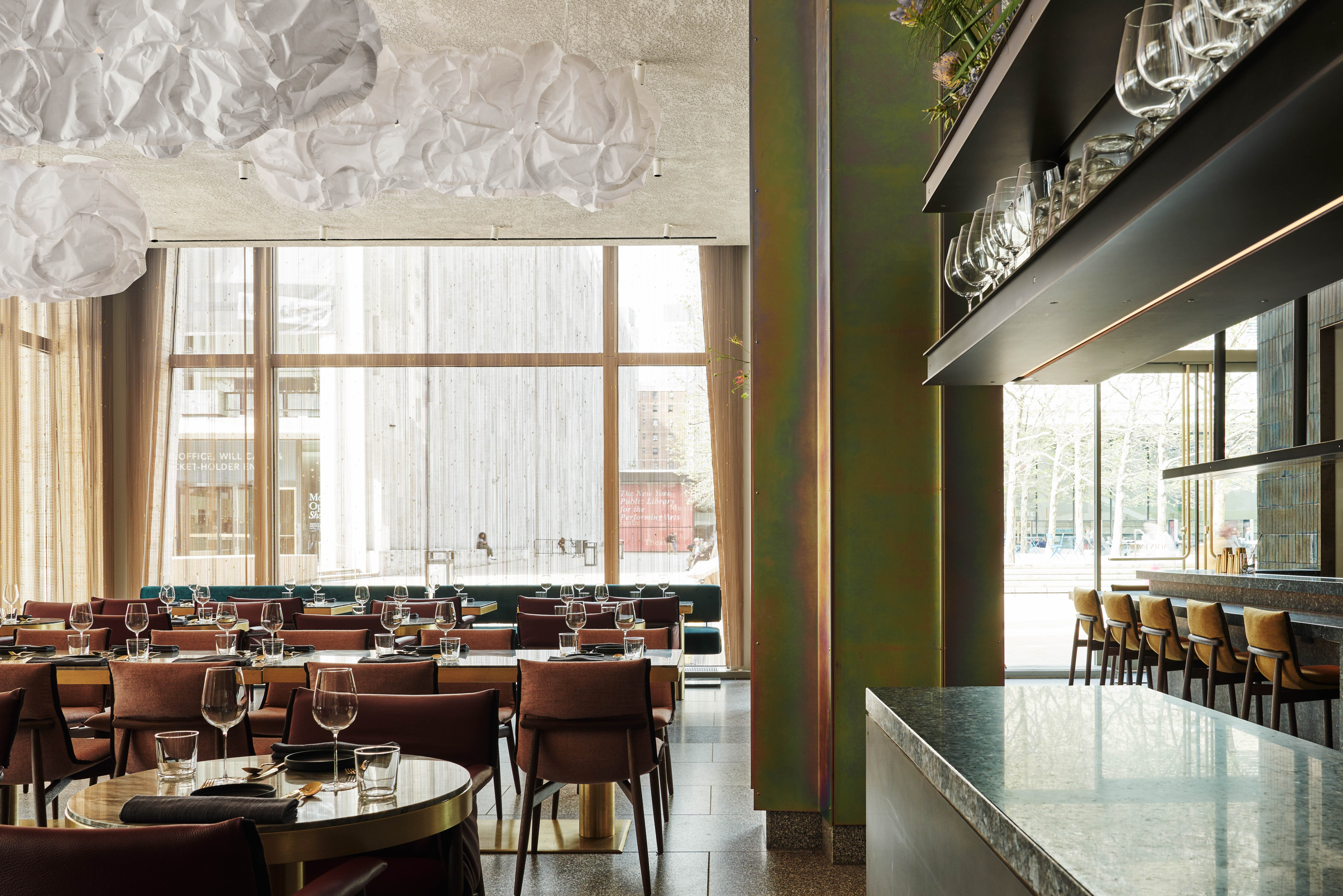
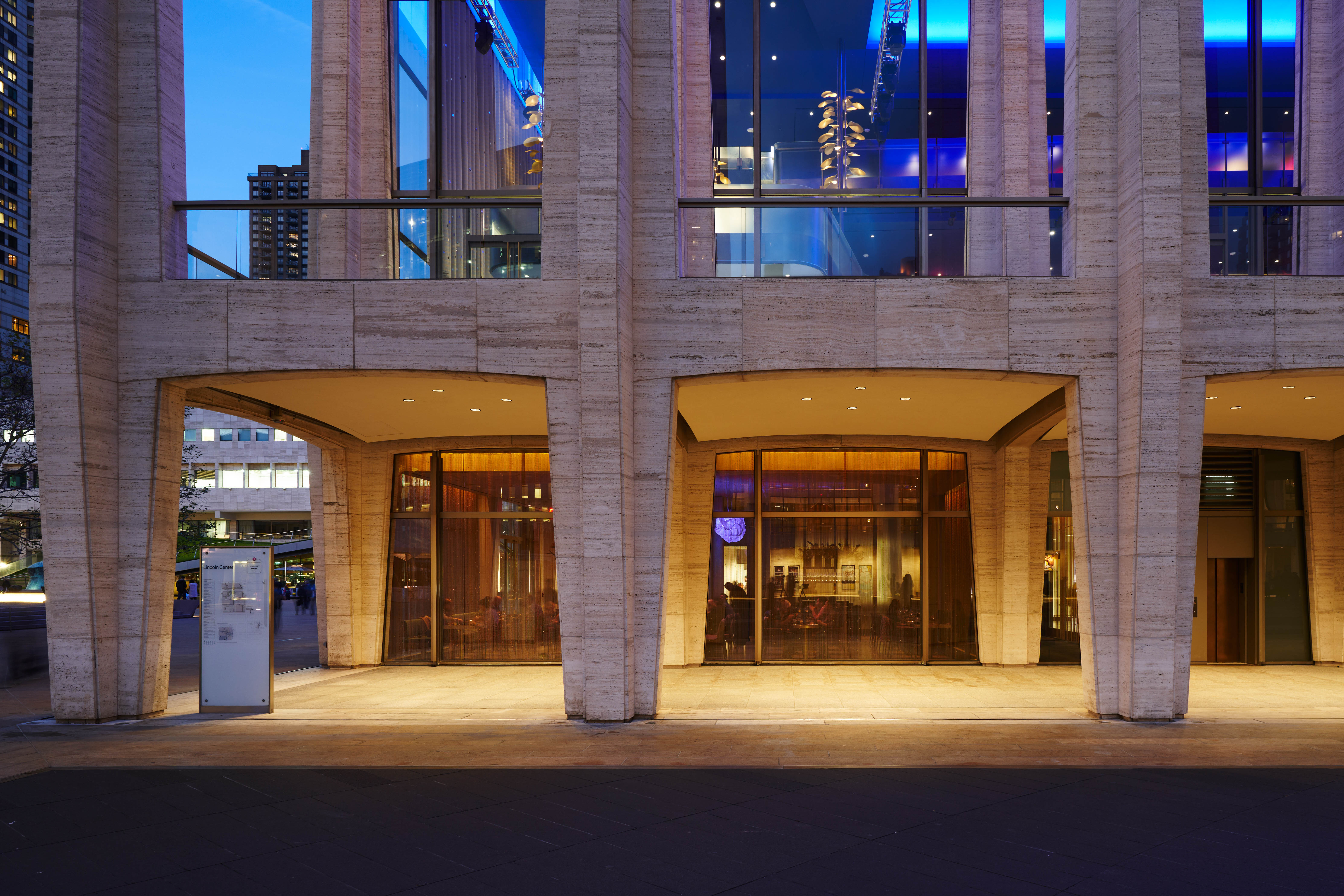 David Geffen Hall at Lincoln Center, completed in 2022, represents a rebirth of one of New York City’s most iconic institutions. Modellus Novus reimagined the concert hall’s hospitality spaces to honor the history and communities that once thrived in the area, particularly the Afro-Caribbean San Juan Hill neighborhood that was razed for Lincoln Center’s development.
David Geffen Hall at Lincoln Center, completed in 2022, represents a rebirth of one of New York City’s most iconic institutions. Modellus Novus reimagined the concert hall’s hospitality spaces to honor the history and communities that once thrived in the area, particularly the Afro-Caribbean San Juan Hill neighborhood that was razed for Lincoln Center’s development.
The new design fosters inclusivity, creating welcoming environments both inside the building and in its public plazas. The flagship restaurant Tatiana, inspired by Chef Kwame Onwuachi’s upbringing in the South Bronx during the 1990s, reflects the cultural vibrancy of the city’s emerging hip hop and art scenes, celebrating the complex identity of New York while contributing to its future.
V8
By Illichmann Architecture and Matthaus Wagner, Vienna, Austria
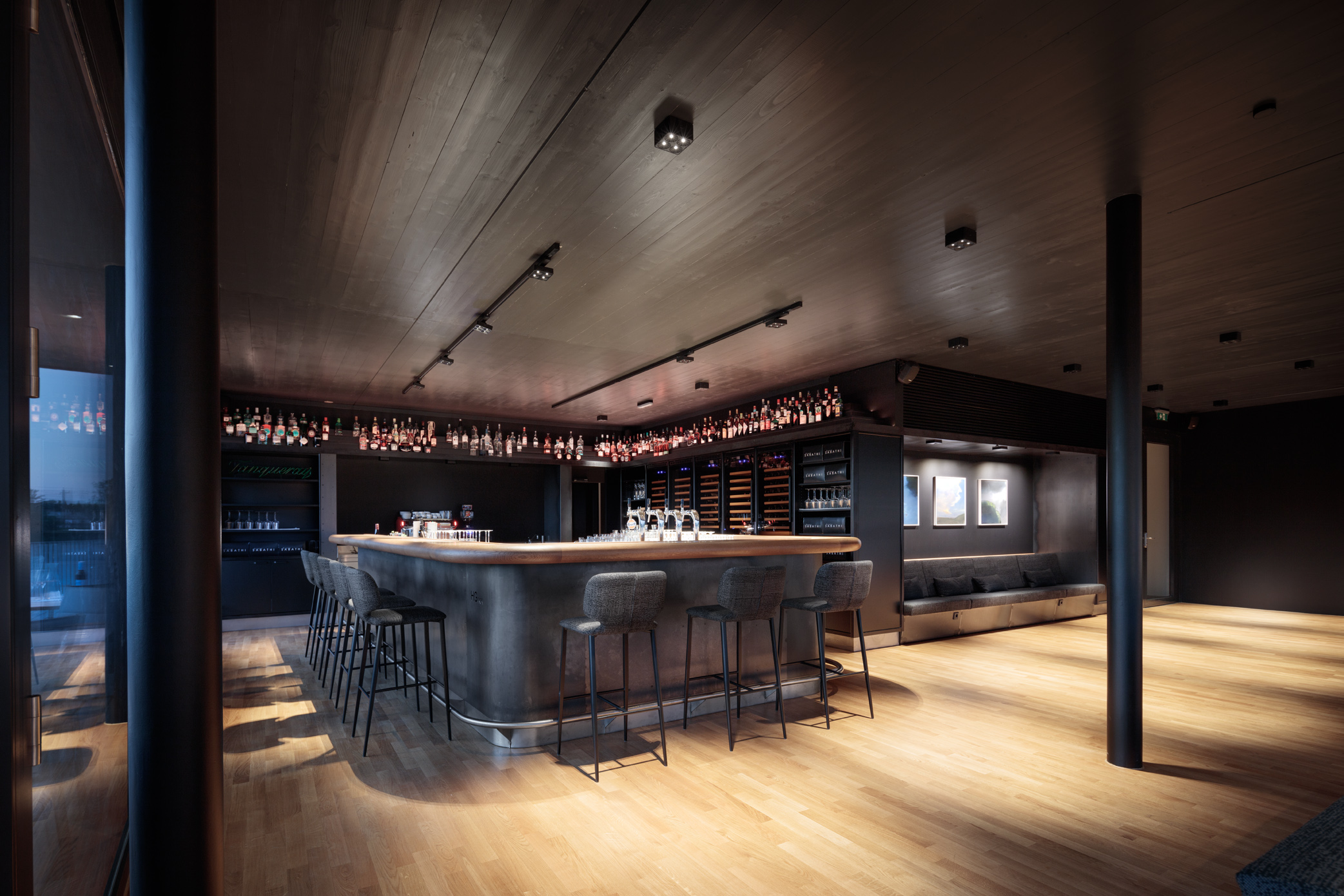
 The “V8” is a key component of the “Classic Depot” project in Vienna, designed to preserve valuable vintage vehicles. Located on the former Fritze-Lacke factory site, the facility features an underground parking level for 50 cars, a ground-floor workshop and storage areas with heated and ventilated spaces, UV-protective glass, and sun protection.
The “V8” is a key component of the “Classic Depot” project in Vienna, designed to preserve valuable vintage vehicles. Located on the former Fritze-Lacke factory site, the facility features an underground parking level for 50 cars, a ground-floor workshop and storage areas with heated and ventilated spaces, UV-protective glass, and sun protection.
The top floor includes office space and a restaurant with a bar, terraces and a staggered lightweight construction, reflecting an industrial aesthetic. Special attention was given to lighting, using Nimbus pads that illuminate surfaces indirectly and enhance acoustics with textiles.
Architects: Want to have your project featured? Showcase your work by uploading projects to Architizer and sign up for our inspirational newsletters.
